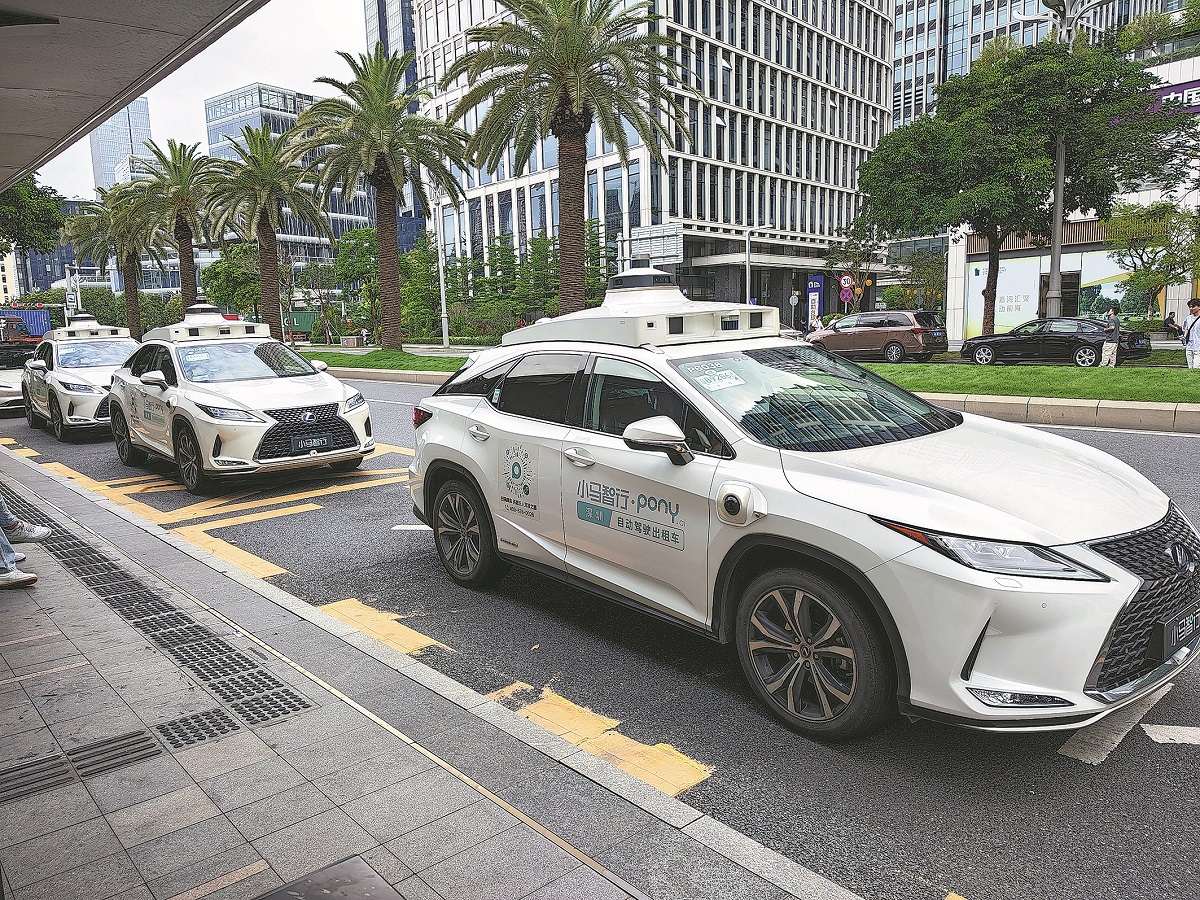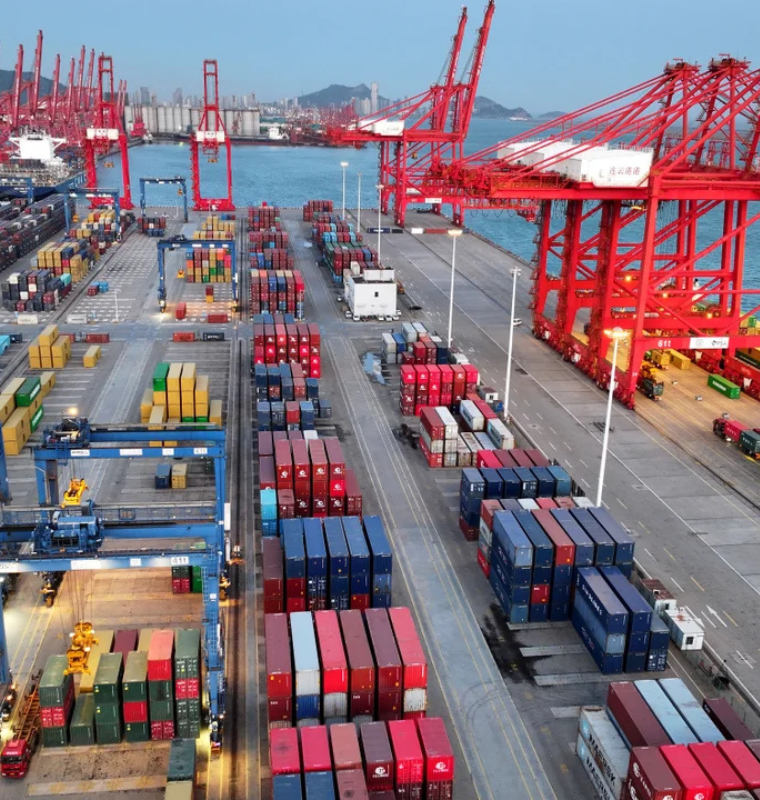Global Robotaxi Market Gains Speed
By
Leah Rosenfeld
Last updated:
November 21, 2025
First Published:
November 21, 2025

China’s robotaxi ecosystem is accelerating into a new phase of global influence, with several major technology leaders declaring that autonomous ride-hailing has finally reached an industry-defining inflection point. Baidu CEO Robin Li became the latest executive to voice strong confidence, stating that public exposure, rapid technical breakthroughs and operational milestones are pushing robotaxis closer to mainstream adoption both in China and the United States.
During Baidu’s recent earnings call, Li emphasized that the company’s Apollo Go network is now achieving per-vehicle break-even levels in Wuhan, marking a major shift toward financial viability. The company operates more than 1,000 vehicles there — its largest deployment — and says demand is strong enough to offset fares that are significantly lower than in Beijing, Shanghai or Western markets. Baidu’s approach, which includes manufacturing its own electric robotaxi vehicles at roughly 50% lower cost than traditional models, is becoming a key differentiator as competition intensifies.
This confidence echoes recent statements from Nvidia CEO Jensen Huang and Xpeng Co-President Brian Gu, both of whom say the pace of self-driving development has accelerated faster than previously expected. Xpeng plans to launch its first robotaxi service in Guangzhou next year, marking another high-profile entrance into a market that Goldman Sachs estimates could surpass 25 billion dollars by 2030.
China’s Aggressive Global Expansion
Over the last 18 months, Chinese robotaxi companies have expanded internationally more quickly than their U.S. counterparts. Baidu, Pony.ai and WeRide have all secured partnerships with Uber, giving ride-hail users access to robotaxis in select regions — beginning in the Middle East. Counterpoint Senior Analyst Murtuza Ali notes that such alliances will be critical for scalability and profitability, providing access to existing demand and reducing operating costs.
Apollo Go’s break-even milestone in Wuhan has become a model for global expansion. According to Halton Niu, the company’s general manager for overseas operations, profitability depends on scale: deploying too few vehicles or covering too small an area will never support sustainable margins. By contrast, operating large fleets in dense urban areas helps companies accelerate data collection, improve safety systems and strengthen regulatory credibility.
Chinese firms are now advancing into high-growth global regions. Baidu is preparing robotaxi trials in Switzerland next month, expanding beyond its recent Middle East rollout. Meanwhile, Abu Dhabi has officially granted Apollo Go a permit to charge fares for fully driverless service, marking a milestone achieved only eight months after pilot trials began.
WeRide has secured a similar permit in Abu Dhabi and claims that removing in-vehicle staff will allow the company to generate profit on each vehicle. Pony.ai is slightly behind in the profitability race but is pushing aggressively, planning a fully autonomous commercial launch in Dubai in 2026 and preparing European and Singaporean expansions.
How U.S. Rivals Compare
In the United States, Alphabet-owned Waymo maintains the largest autonomous fleet with more than 2,500 vehicles operating across California, Texas and Florida. The company is also expanding internationally, recently announcing future service plans for London after pilot operations in Tokyo.
Tesla, which sells millions of vehicles globally, began testing its dedicated robotaxis in Texas only earlier this year and recently obtained permissions to operate in Arizona. Amazon-owned Zoox continues to scale operations domestically but has yet to publicly confirm international ambitions. None of the major U.S. contenders have provided clear guidance on per-vehicle profitability, a contrast to Baidu’s open disclosures.
While Baidu has not ruled out a U.S. expansion, the company is prioritizing Europe and the Middle East, where regulatory frameworks and local partnerships are advancing faster. Analysts expect competition between Chinese and U.S. players to intensify as more regions begin approving commercial autonomous ride-hailing.
Race for Scale and Safety
Fleet size is emerging as a critical differentiator. Pony.ai aims to deploy 1,000 robotaxis in the Middle East by 2028, while WeRide is targeting the same number by the end of next year — an ambitious timeline backed by significant capital and strategic partnerships. Apollo Go currently operates around 100 vehicles in Abu Dhabi and Dubai and plans to double its fleet soon.
Data accumulation remains the backbone of successful autonomous driving systems. Morningstar strategist Kai Wang notes that Apollo Go’s early lead in test rides allows its sensors and AI models to improve faster, directly enhancing safety performance. More miles mean better object recognition and faster responsiveness — essential attributes for passing regulatory hurdles.
Even in China, however, robotaxis remain restricted to designated zones. Pony.ai recently became the first company approved to operate across the entirety of Shenzhen, one of China’s largest tech hubs. But in cities like Beijing, service remains limited to controlled areas such as the Yizhuang district.
Independent tests show varying performance between operators. CNBC found that Pony.ai offered smoother rides, while Apollo Go occasionally executed abrupt braking. Safety remains a central concern for regulators, though none of the major operators — including Waymo, Baidu, WeRide, Pony.ai, Xpeng or Zoox — have reported fatalities or major injuries tied to robotaxi operations. Some companies have begun advertising low airbag deployment rates as a reliability indicator.
What Comes Next
Analysts expect China to intensify national support for autonomous driving, helping local companies push from several thousand robotaxis today to tens of thousands by 2026. With stronger financial fundamentals, larger fleets and wider regulatory backing, the sector could finally transition from experimental testing to large-scale commercial adoption.
The momentum described by Baidu, Nvidia, Xpeng and other leaders marks a clear shift: the global robotaxi race is accelerating, competitive boundaries are expanding, and the next two years are likely to determine which companies emerge as long-term winners in a market poised to redefine urban mobility.
Popular articles
Subscribe to unlock premium content
Why Some People Hire Professional Bystanders to Simulate Social Interaction in Public Spaces
.png)
The Rise of Micro-Memorials People Paying to Preserve Tiny Personal Moments in Luxury Miniature Sculptures
.png)
The Market of Paying Strangers to Share Their Most Embarrassing Stories in a Private Setting
.png)
Why Some People Hire Professional Bystanders to Simulate Social Interaction in Public Spaces
.png)
The Rise of Micro-Memorials People Paying to Preserve Tiny Personal Moments in Luxury Miniature Sculptures
.png)
Why Some People Hire Professional Bystanders to Simulate Social Interaction in Public Spaces
.png)








